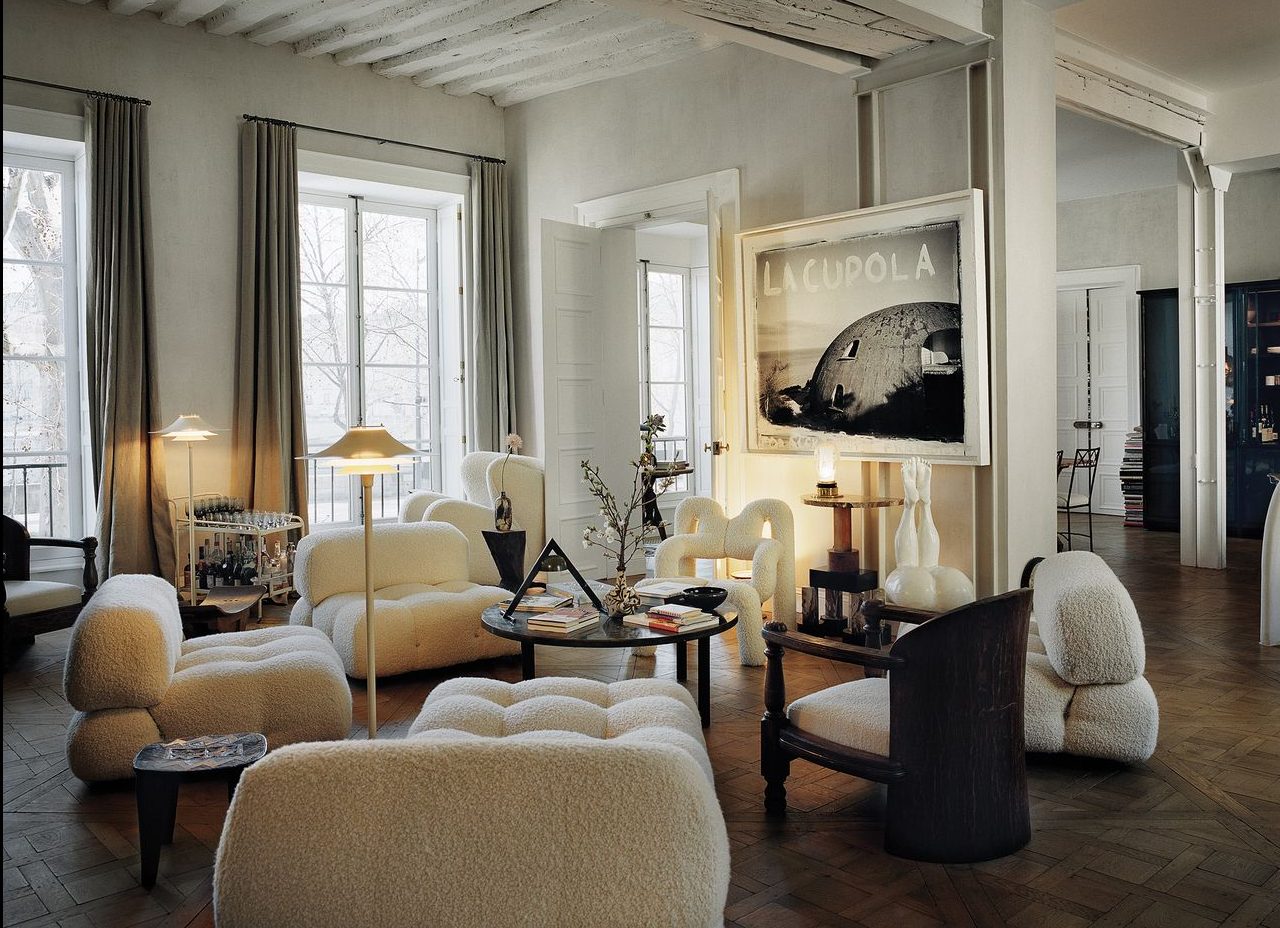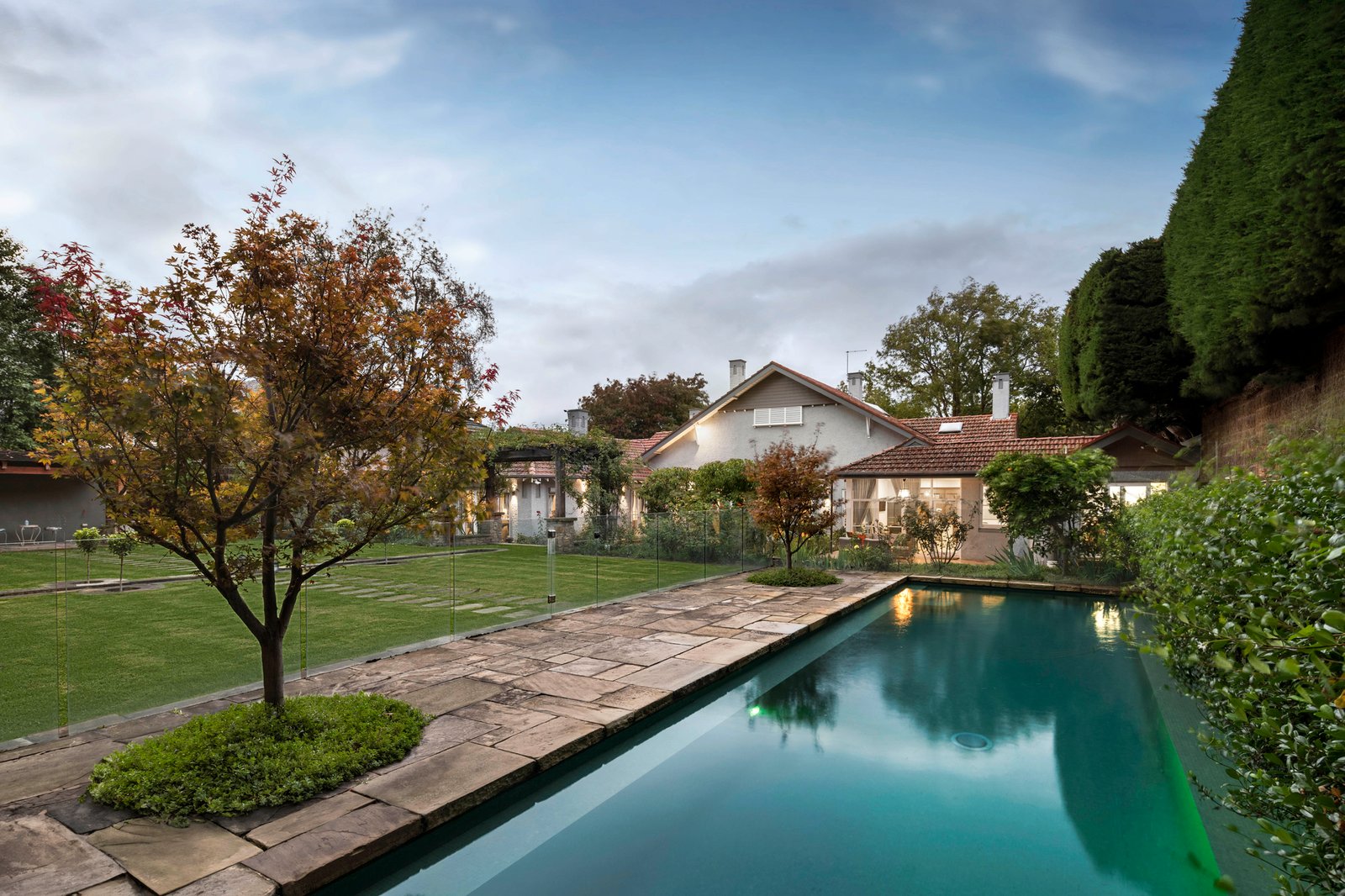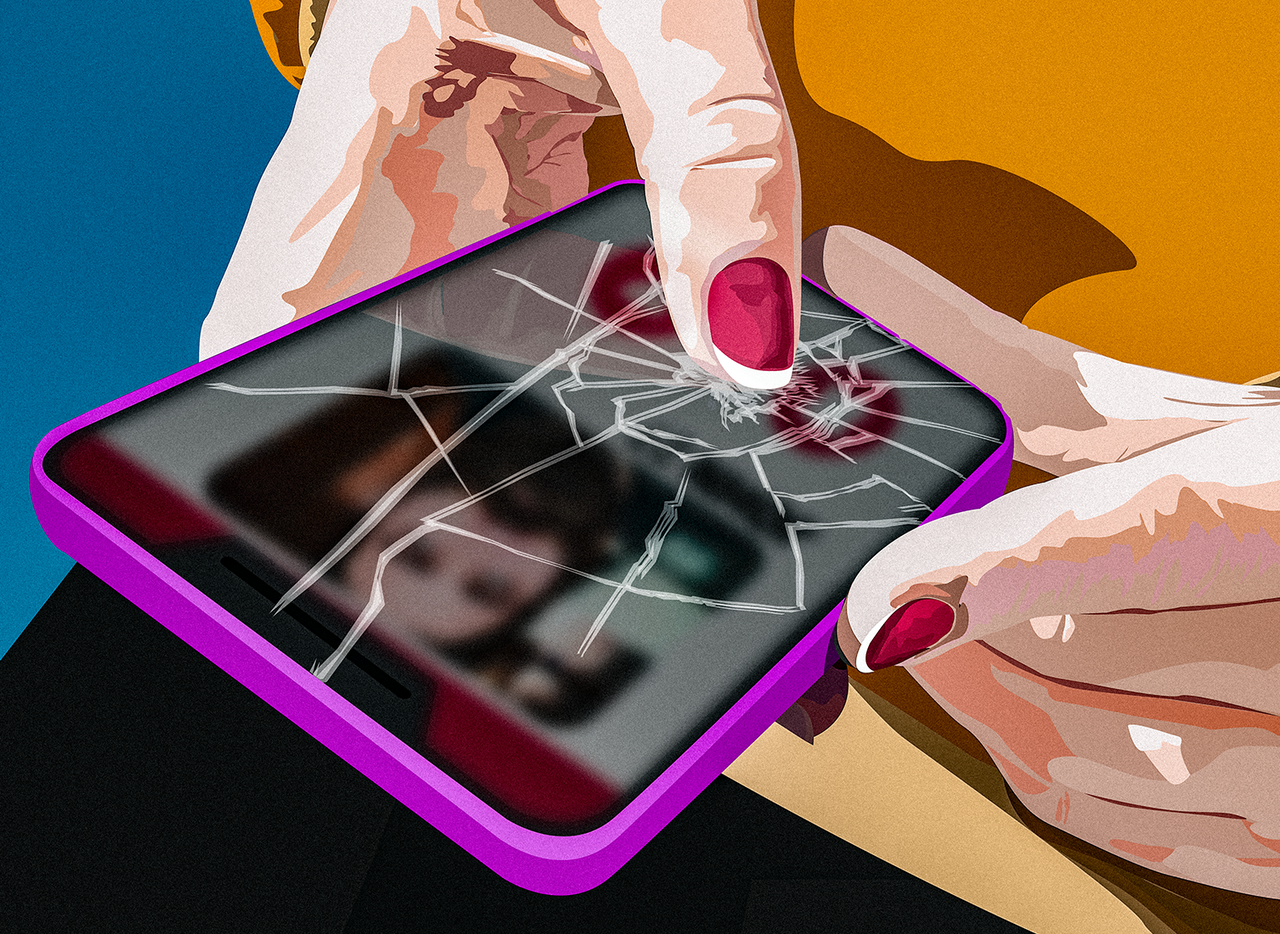Parisian Hôtel Particulier Revamped Into Dream Home
Alexandre de Betak and his wife are focusing on their most personal project yet.
Alexandre de Betak, the 52-year-old designer behind some of the most viral fashion shows of the past 25 years, has staged runway spectacles in audacious locales. Through his Bureau Betak creative agency, he’s conceptualised shows from Dior runways in Moscow’s Red Square and under an 18-metre mountain of blue delphiniums custom built in the courtyard of the Louvre to a blue diamond catwalk inserted for Tiffany into Beijing’s Forbidden City.
After a day at the office conjuring another rapidly vanishing show for a client, de Betak wants nothing more than to design space for his family’s personal use. “I’ve spent my life designing for others,” he says, “so in a way designing for us and designing permanent homes is incredibly relaxing, just by the nature of being the same yet the opposite of what I do every day.”
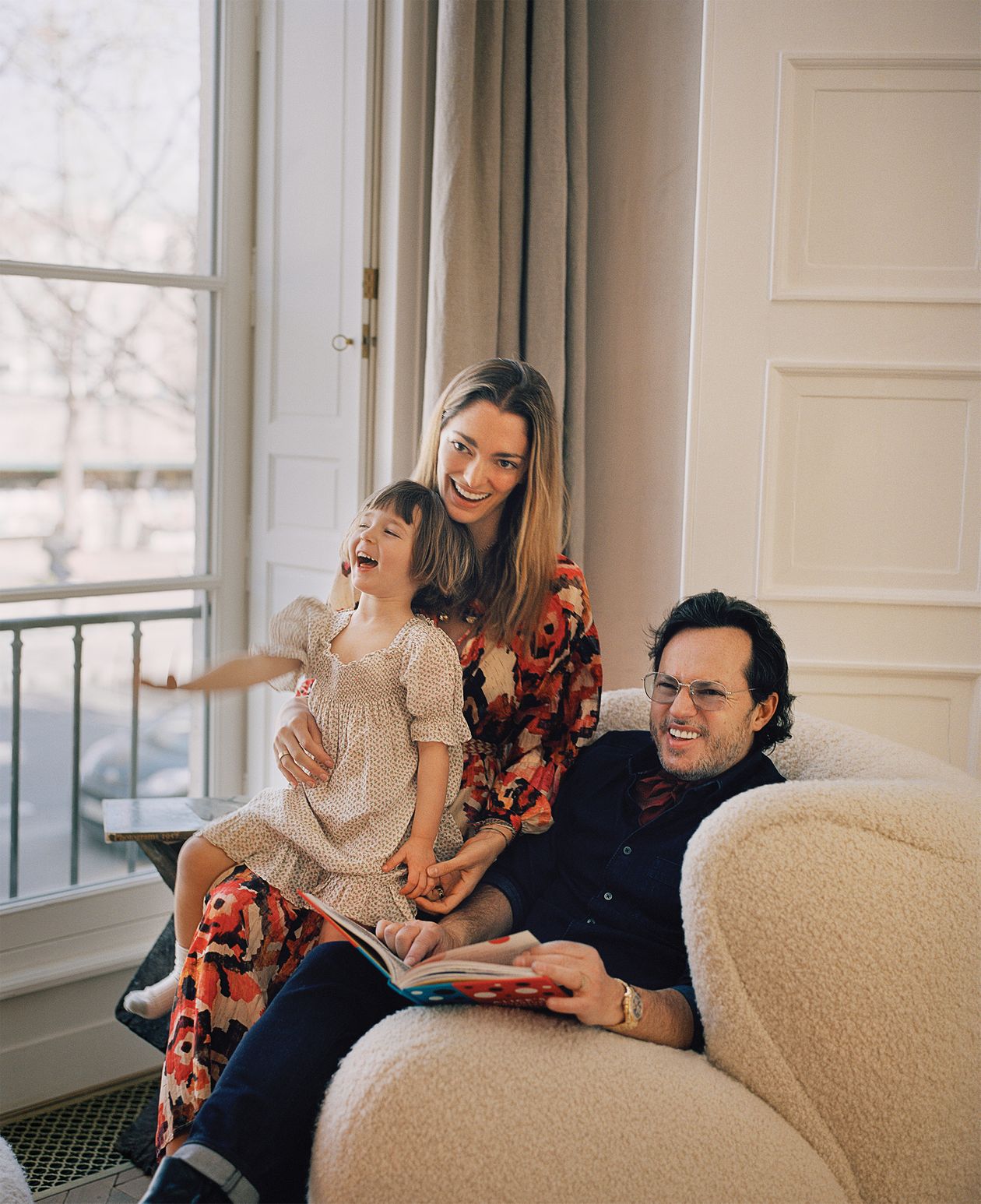
By the time he finished his last home design project in 2016, a playful loft in downtown New York with a stripper pole in a hidden party room, he was already at work on a new place to live, a fixer-upper across the Atlantic on the Left Bank of the Seine.
Four years ago, he began to shift his centre
\of gravity to Paris, returning to the city he grew up in after more than two decades based primarily in New York. (Bureau Betak has offices in both cities, along with Shanghai and Los Angeles.) Alex arrived with his partner in life, his pregnant wife, Sofía, the 36-year-old Argentine creative director, graphic designer and boho-chic style influencer known to her friends and 350,000-plus Instagram followers as Chufy (a childhood nickname). They spent their first 18 months in the city glamping indoors, squatting, essentially, in the beautiful ruin that would become their new home, former offices stripped to the bone—four separate units on three floors of a 17th-century hôtel particulier. “We were sleeping with six hot-water bottles,” says Sofía. “We would get pieces of ceiling just falling on us, holes in the wall.” Adds Alex: “We were cooking in the fireplace, heating by the fireplace. It was very, very fun.”
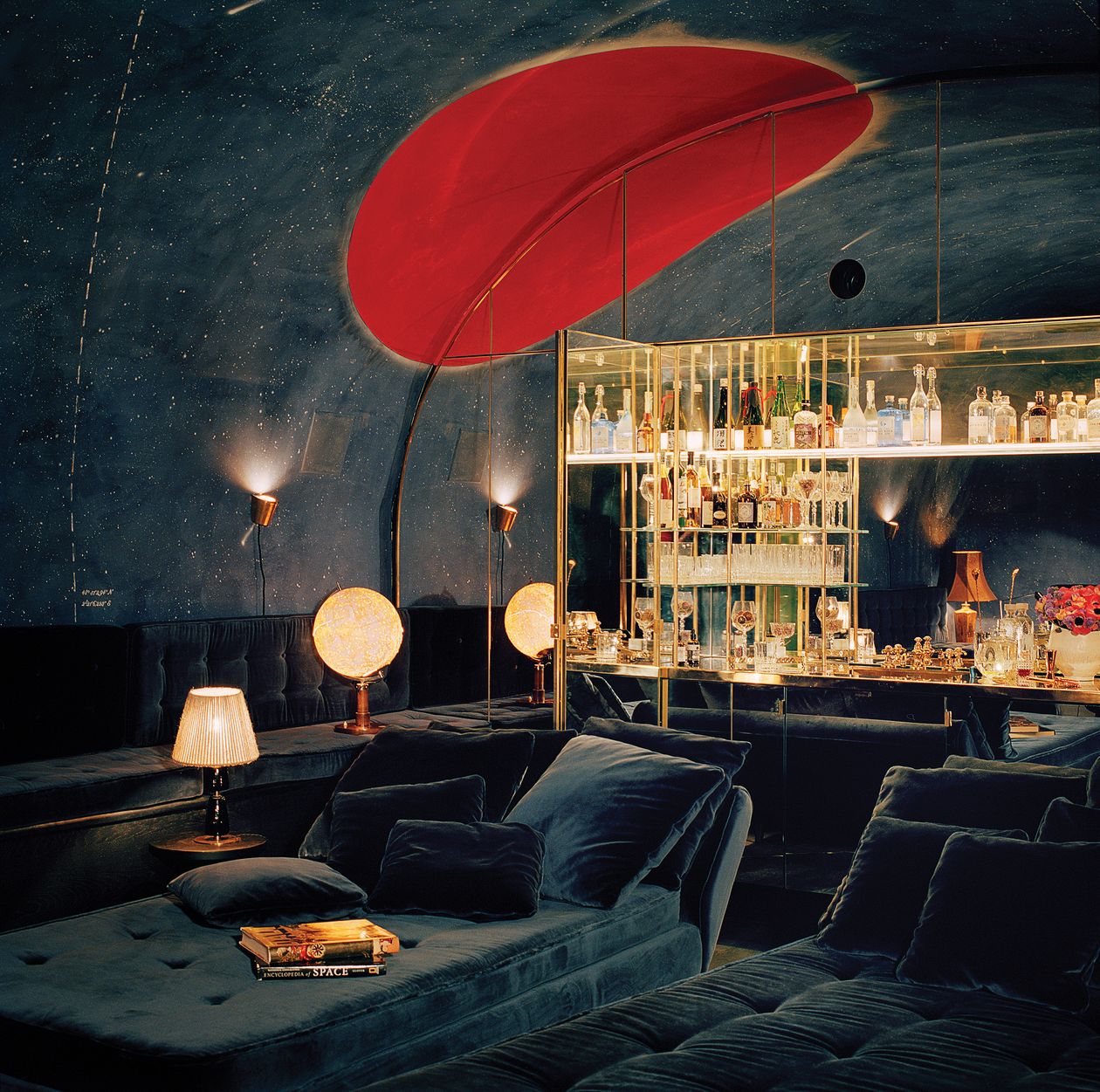
While inhabiting the space, Alex mapped out plans for what it might soon become, imagining the sculptural staircase, in white gesso, that would wind down through three floors, the secret party room—all of his homes have one—he’d excavate in the basement. “I have to say it was great to design it from the inside,” he says. After Airbnb-hopping during the two years of construction, early last year, Alex, Sofía and their toddler daughter, Sakura, finally moved into the finished space.
Though Alex and Sofía were on the road constantly pre-pandemic, individually and as a unit, they filled their free time—there was rarely much of it—travelling for pleasure, too. Sofía grew up travelling—her mother ran a high-end travel agency in Buenos Aires. The couple named Sakura for the cherry blossoms that were blooming on a trip to Kyoto when they found out they were expecting a girl.
They were just back from a family vacation in Myanmar, and recently moved into their new home, when the first pandemic lockdowns started in autumn of last year. Alex was bedridden in those first uncertain weeks. He thinks it was Covid-19, though reliable tests were hard to come by back then. “I mean, we were lucky—we were in luxury confinement,” says Sofía, “but most people had it really, really tough.”
After spring Fashion Week in Paris wrapped on March 4, Bureau Betak saw its planned roster of shows heading into the summer vanish overnight. “Everything got cancelled,” says Alex.
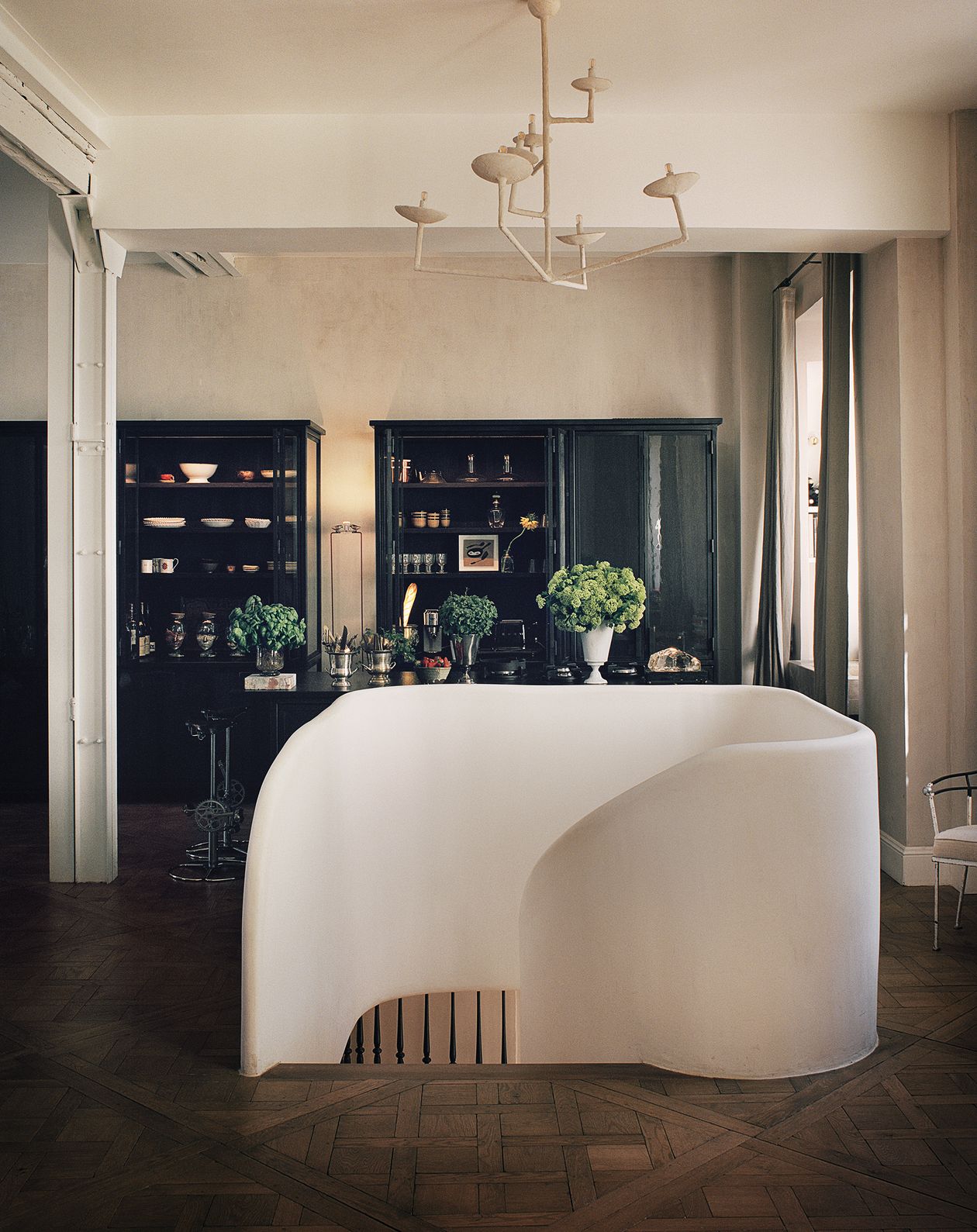
Sofía launched Chufy, her eponymous line of travel-themed women’s clothing, in 2017, each collection inspired by a new destination, from the Pampas of Argentina to the savannas of Kenya. At the start of the pandemic, her business also came to a halt as the factory in India producing her flouncy blouses and flowy dresses shuttered.
Feeling restless stuck at home, she organized a charity auction online for Doctors Without Borders in April of last year, enlisting her friends to donate objects, expertise and experiences: a private polo class from Nacho Figueras, an online consulting session with Colette founder Sarah Andelman, a signed tennis racket from Maria Sharapova. Getting the auction going “kind of helped me get out of the darker cloud,” she says.
Alex is often dubbed the Fellini of fashion. In a good year, when his business hasn’t been crippled by a global pandemic, Bureau Betak might stage as many as 100 productions, working with young designers and veterans, avant-garde and legacy brands, on blowout presentations and smaller, more cerebral shows. “He’s always thinking about how to make it feel special; it doesn’t always mean it has to be the biggest and the brashest…not just the big extravaganza, although he is great at doing that; you could also have an intimate show,” says Michael Kors, one of Alex’s earliest clients, going back to the mid-’90s when he first set up shop in New York.
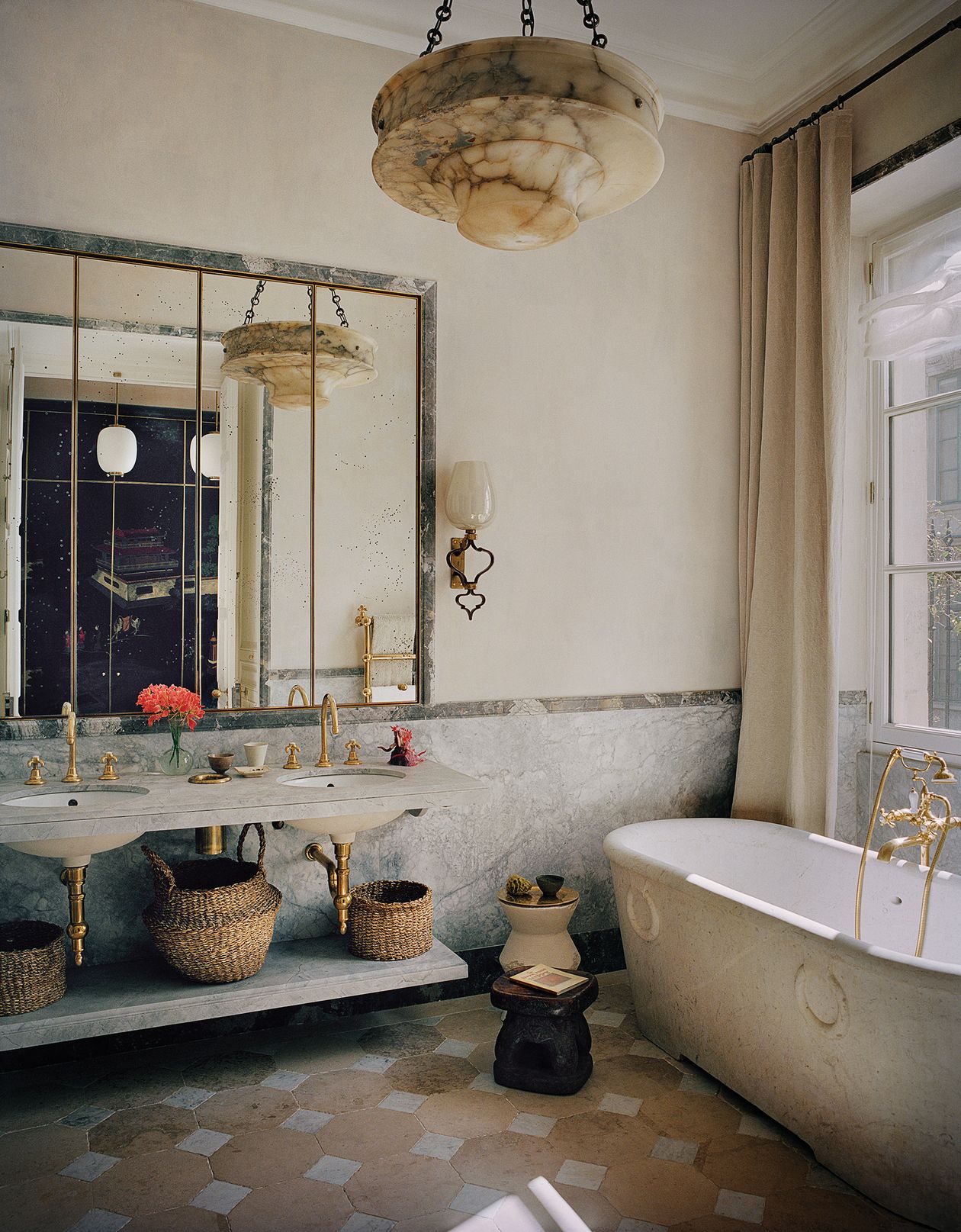
In spring of last year, as his health and the weather in Paris both improved, Alex got back to work from a laptop by a window with a view of the Seine. He began to devise a path forward for clients eager to start showing again. “After a couple of months you realize it’s going to be there for a while,” Alex says of the pandemic. “That’s when we started to really rethink the calendars and the format and everything.”
He had plenty of tools in his arsenal ready to go, having launched a creative agency, Bureau Future, a few years earlier, focused on the digital future of the live fashion show. “I believed for a long time that in order to give those great, live, in-person shows a reason to continue to exist, we needed to augment them digitally better, to film them better, to design them with the filming in mind and to transmit that better when we stream them,” he says. “And then, obviously, with Covid we accelerated the process quite drastically.”
Though many designers decided not to show at all last year, a few signed on for virtual shows, filmed with no audience. In July, French label Jacquemus, taking advantage of a moment of relaxed restrictions, opted to invite spectators to its live show outside Paris, shuttling 110 socially distanced VIPs to the winding catwalk Bureau Betak cut through a wheat field. “We bet together that we could do a show with a live audience,” says Alex. “We were very lucky. We caught a very small window.”
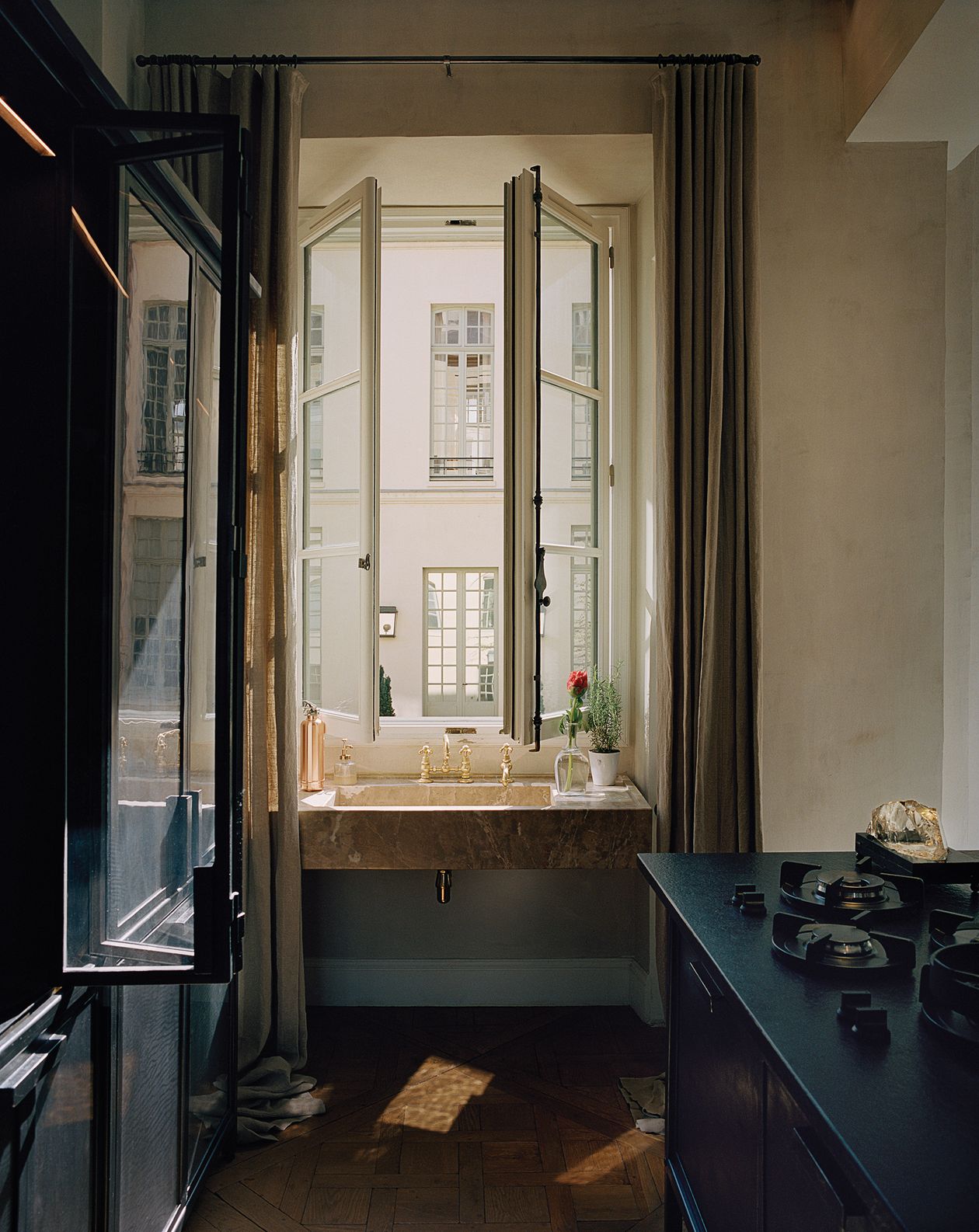
Filmed or live-streamed shows with no editors or influencers in attendance followed for Dior in Puglia, for Fendi in Milan and for Gabriela Hearst in the Brooklyn Navy Yard. As France began to open back up last summer, Sofía also got her business going again. From her home office in the apartment’s sun-drenched winter garden, with ivy climbing up lattice walls, she began sketching ideas for a new Chufy collection, inspired by her paternal grandparents’ Romanian heritage. “I just wanted to go through memories, old things from my grandparents; I travelled introspectively,” she says.
Evenings were spent at home, the family gathered around a custom-built kitchen island, Alex at the stove working through his rotation of pastas (“variations of vongole, bottarga and pesto,” as Sofía describes them). His two sons, Amaël, 20, and Aidyn, 17, from an earlier relationship with actress and model Audrey Marnay, would drop in from their mom’s place for a week at a time. At lunch there were picnics outside in the courtyard garden, chatting, socially distanced, with new neighbours in the hôtel particulier.
There were plenty of reminders, throughout the apartment, of Alex and Sofía’s old travelling life, mismatched accents—a pair of Moroccan candelabras here, a black lacquered Burmese pot there—brought home in suitcases or picked up online in hotel rooms in bleary-eyed bidding sprees.
“I can be in Shanghai or Tokyo and I’m jet-lagged and I’m online at an auction that’s in Italy or Eastern Europe and I’ll buy a piece from Japan,” says Alex. “I kind of see no boundaries.”
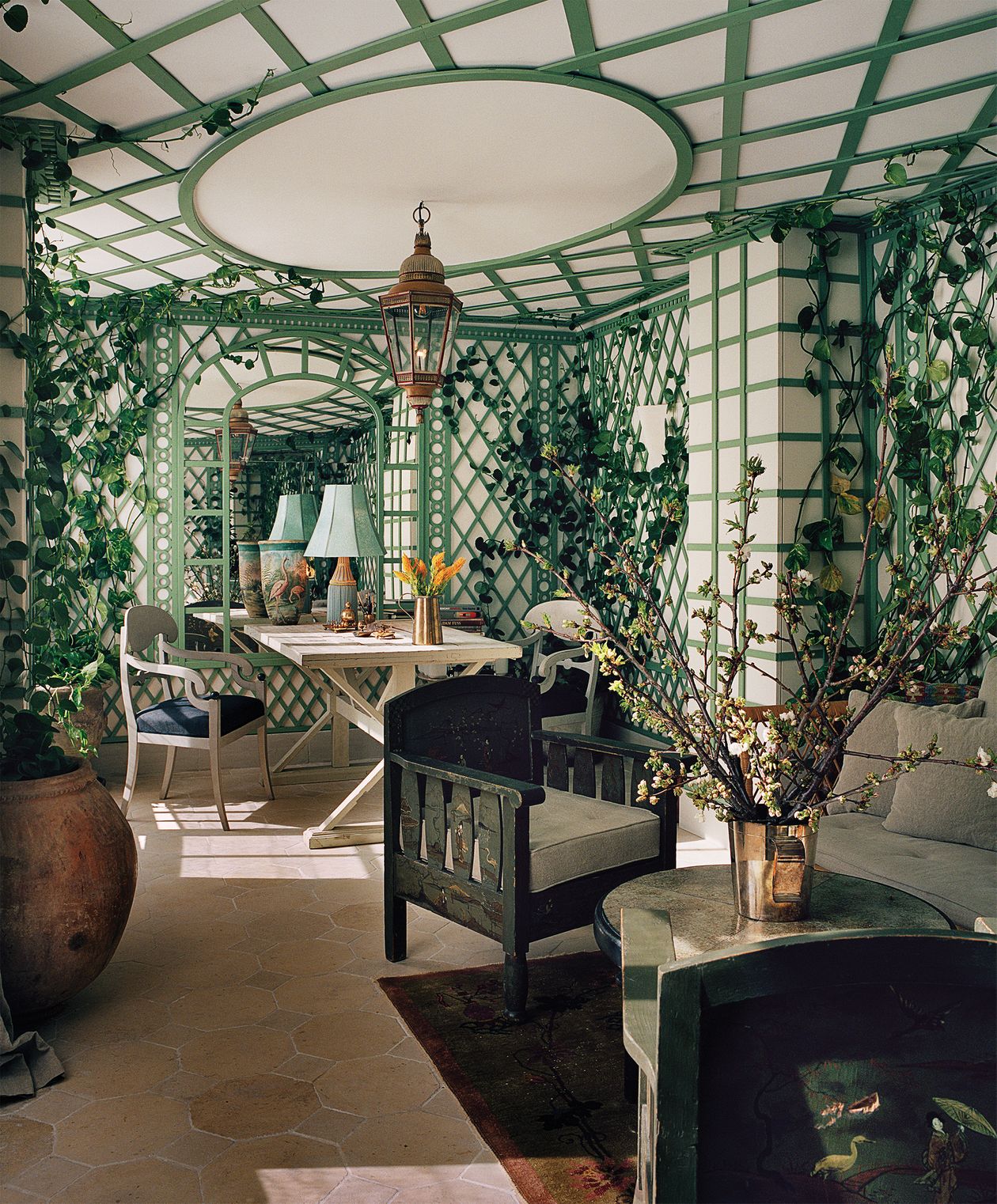
The building’s last tenants, offices of the museum of the Paris hospital system, stripped it of its historic character. As he planned his gut renovation, Alex imagined the space as it might have been when aristocrats lived there. He laid down new flooring to bring the place back in time, installing black-and-white pierre de Bourgogne stone on the ground floor, wooden parquet de Versailles upstairs above that. A golden hall of mirrors en route to his daughter’s bedroom brought a more theatrical 17th-century touch.
He filled the place with an eclectic mix of contemporary furniture and flea market antiques, pieces of Mario Bellini’s modular Camaleonda sofa across from a leopard-print chair from the 1940s. The seats in the living room, including his favourite Minotaure armchair from Pierre Augustin Rose by the window, were all reupholstered in the same rough-textured white fabric. Next to the master bedroom, antique panels on a Japanese theme, picked up at the Paul Bert Serpette market on the edge of Paris, became the closet doors inside a new dressing room. Much of the contents—mostly in monochrome black and white—were acquired with the new place in mind, after Alex auctioned off almost everything from his last Paris apartment back in 2018: 188 lots of kinetic art, toy robots and Star Wars memorabilia, among other collecting obsessions. “It was a brand-new time in our life,” he says. “I wanted to start from scratch.”
Though there’s some gravitas to the new space—“I wanted to do something very feminine and very romantic in a way and a lot softer than what I used to have,” says Alex—there’s still plenty of his signature whimsy throughout.
The basement nightclub space, hidden behind a mirror, features a night-sky mural inspired by 17th-century star maps with each family member’s zodiac constellation. (They’ve been watching movies there during the pandemic.) Upstairs, an archangel painting in the master bedroom opens into a projection TV screen. A bookcase in the library opens to reveal a secret passage down to the street. “We always have secret doors and secret escapes in every place we design,” he says. “Don’t ask me why.”
Alex lined the walls in his daughter’s bedroom in a classic Japanese motif, a collage of his own creation featuring bamboo, cherry blossom trees and kimono-clad figures that, upon close inspection, turn out to be miniature versions of her parents, grandparents, aunts, uncles and siblings. The French fabric firm Pierre Frey has added the design to their 2022 wallpaper collection, launching in January.
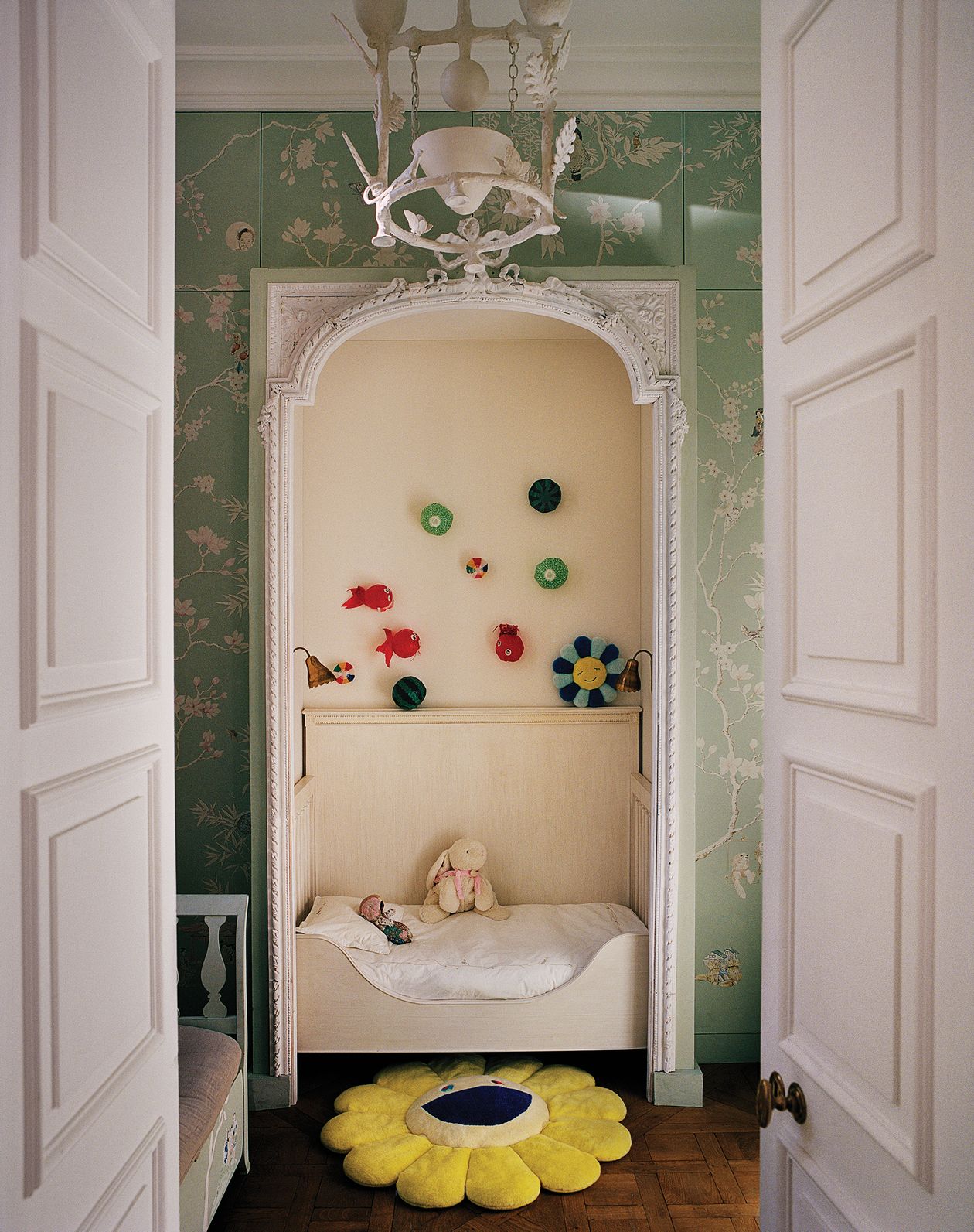
By midsummer of last year, the de Betaks had traded the city for their vacation home by the sea, a villa on Mallorca, which was built and completed by Alex in 2010. And they spent a few weeks of their summer holiday visiting friends on the island of Panarea, north of Sicily. Over an alfresco meal there, Sofía came up with an idea for another Chufy collection, a collaboration with André Saraiva, the graffiti artist known as Mr. A, who sat beside her sketching doodles inspired by their time together in the Aeolian Islands. “I [drew] a little volcano, a pasta—Alex is the king of the pasta with bottarga, so I did a pasta with bottarga—did all those little things we enjoyed during our summer,” says Saraiva, who was one of three best men at Alex and Sofía’s weeklong wedding in Patagonia in 2014. This summer Chufy debuts a capsule collection of caftan dresses featuring those Mr. A sketches on Sofía’s Italian island–inspired prints.
Saraiva, one of Alex’s oldest friends, says he has been to every home he’s designed. “I’m an expert on Betak design,” he says. “[Alex] has got a great sense of décor and space that designers have, but he has something that I really appreciate…there are always details that come from playing around, not everything is serious. He’s a big fan of Star Wars. There’s always little details that remind me of the Star Wars saga—in the new place, the blacks, the whites, the round stairs.”
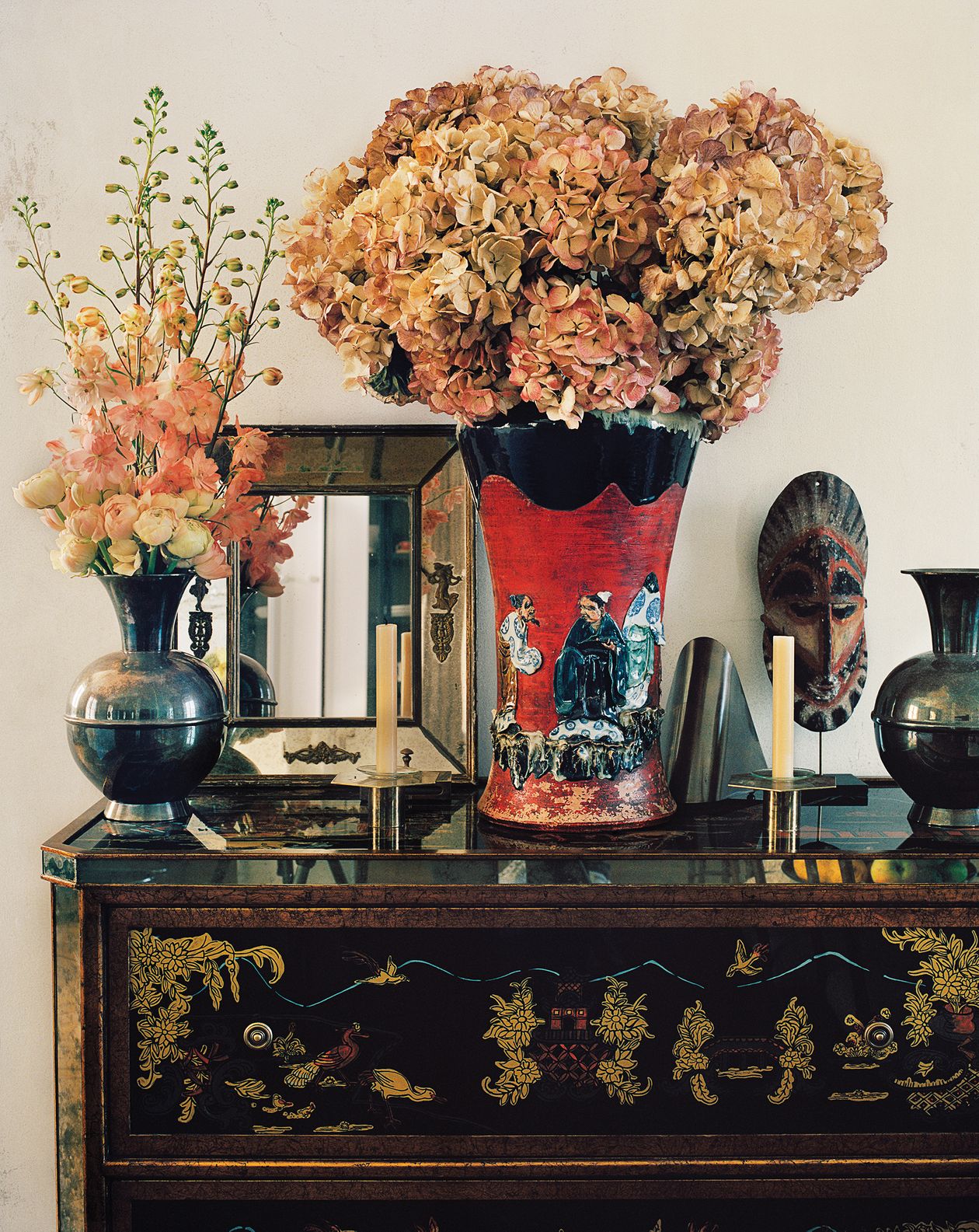
Alex, who has no formal design training, was just 17 and still finishing high school when he fell into fashion in 1986. That year, on a family trip to Spain, he met a young clothing designer named Sybilla Sorondo who’d been building a cult following from her atelier in Madrid. Taken by her edgy work and the freewheeling scene around her, and by the creative spirit of La Movida that gripped Madrid in the post-Franco years, he found himself drawn to the city and into Sorondo’s orbit.
“At that time my workshop was a place where people would hang out; there was lots of movement,” recalls Sorondo. “All of a sudden [Alex] was the kid who was always there—‘Oh, he’s still here.’ ”
Eventually, Alex got a few fashion editors in Paris to take a look at Sorondo’s pleated frocks. “And that’s how my international expansion started,” she says. He became her official press agent and art director while still studying for his baccalaureate exam. They travelled to Tokyo and Milan together. And after graduation he launched Bureau Betak, still ill-defined as an enterprise, out of a home office, with Sorondo’s eponymous line, Sybilla, as its first official client. He added a Japanese modelling agency, L’Homme et La Femme, to his roster, scouting talent for them in Paris and also hunting for classic cars for the agency’s owner. “There was no name to a lot of what I was doing back then,” he says. The big bash Alex organized for the launch of Sorondo’s Paris boutique in 1991, featuring jugglers, acrobats and a live orchestra along with models showcasing the clothes, set the stage for his future fashion show work.
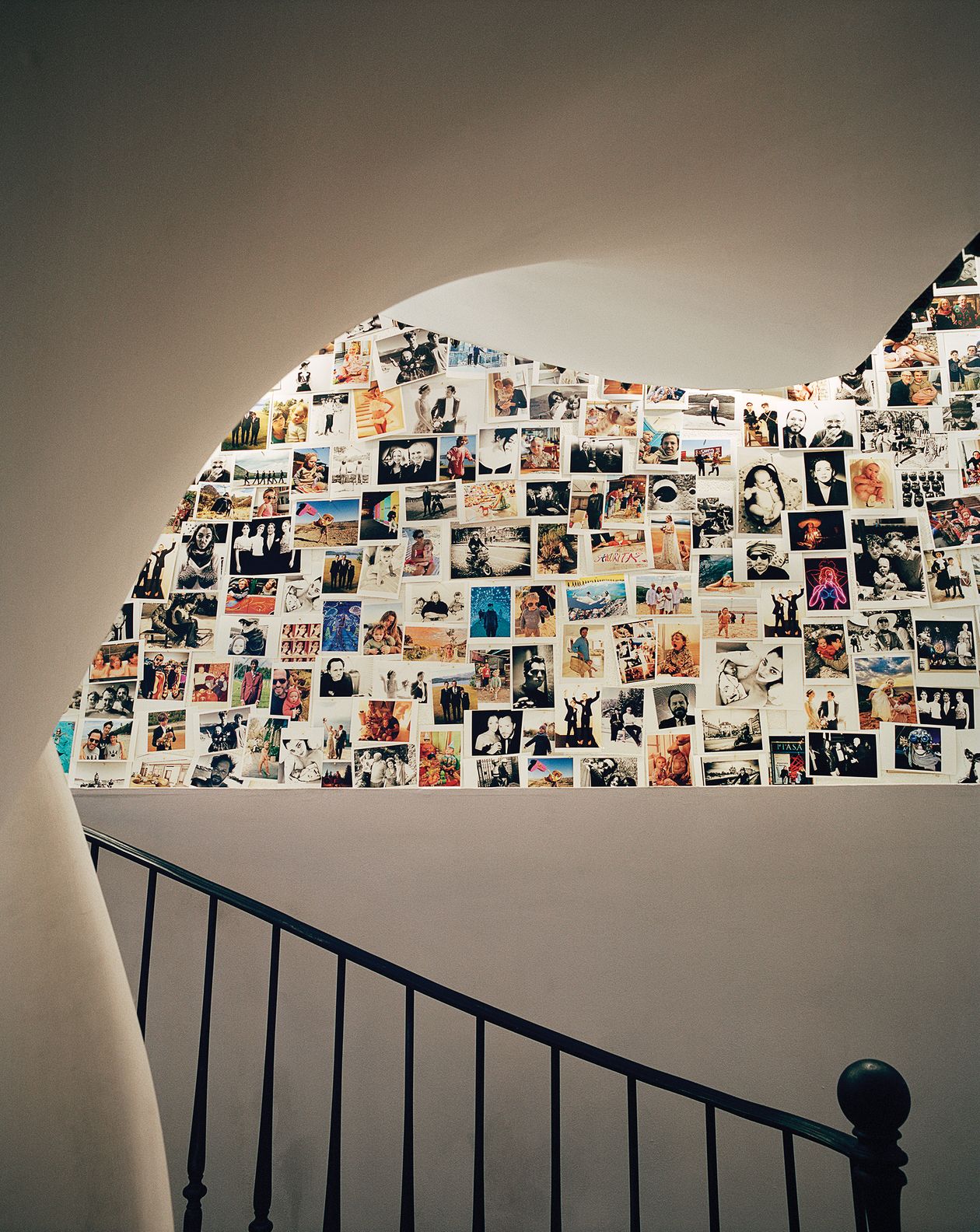
Shortly afterward Sorondo took a long break from the fashion world to focus on raising a family. Alex decided to move to New York.
With his first clients there, he started to challenge the status quo. In an early show under the tents at Bryant Park he suspended designer John Bartlett in a hammock above the catwalk, instead of dangling the brand logo as everyone else did. “Many creative decisions came to me spontaneously like that,” says Alex.
Very quickly he began to organize shows in offbeat locales, ramping up the spectacle in the process. His first collaboration with Kors, staged in a cavernous loft space in SoHo, featured a travel theme. “We had a train that took models through the Swiss Alps, we had a helicopter landing,” recalls Kors. “It was a really interesting way to present it, to get the feeling behind the collection, rather than doing the traditional fashion show.”
“I mean, nothing is impossible,” says Laura Mulleavy of Rodarte, who staged her first show with Bureau Betak just as her and her sister Kate’s label took off in 2007, of de Betak’s approach. “You can have an idea and then you translate it into a live theatrical experience.”
Many of Alex’s working relationships with designers have endured for decades, following the careers of John Galliano, Raf Simons and Kors, among others. In April Kors unveiled his 40th-anniversary show online, a filmed tribute to Broadway, directed by Alex, in New York’s theatre district. “I try to always have very long and deep relationships,” he says.
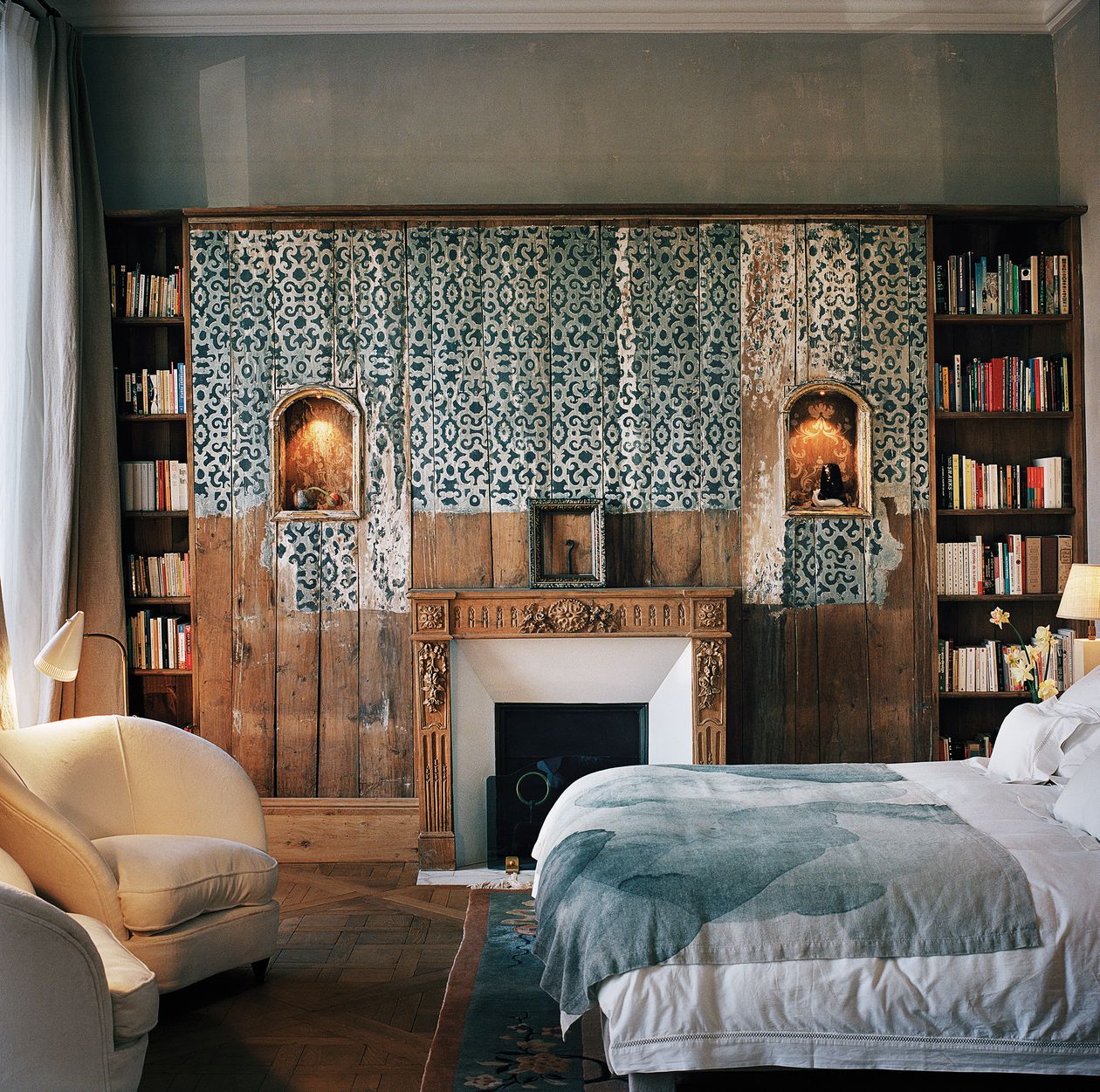
In the late ’90s, as Alex’s career was taking off in New York, in Buenos Aires his future wife, Sofía Sanchez Barrenechea, was getting an early start in the fashion world. In 1999, when she was 14 years old, Sofía was approached by a modelling scout while in church for her confirmation. Cast in a national campaign for John L. Cook, a big Argentine clothing brand, she was soon on billboards and shopping bags across the country.
“My picture was everywhere,” she says. “It was quite a shock—I mean, an ego boost but also very hard to handle.”
Sofía went on to study graphic design at the University of Palermo in Buenos Aires before moving to New York on an IMG Models visa in 2008. In between the occasional shoot, she pursued a career in design, working with beauty clients at branding agency Lloyd & Co. Sofía was back in Buenos Aires for the winter holidays in 2009 when Alex showed up at her family home—invited by her older sister, Lucia, a fashion journalist he knew from Paris. Though Alex’s estranged father, whom he didn’t grow up with, is from Argentina, this was his first time in the country.
“He spent Christmas with my family even before we started dating,” says Sofía. “I think first he liked the family and there was only one sister single, and it was lucky me.” They began seeing each other back in New York and were married five years later, surrounded by fashion royalty, the bride in Valentino couture, custom-embroidered in crystal and pearls.
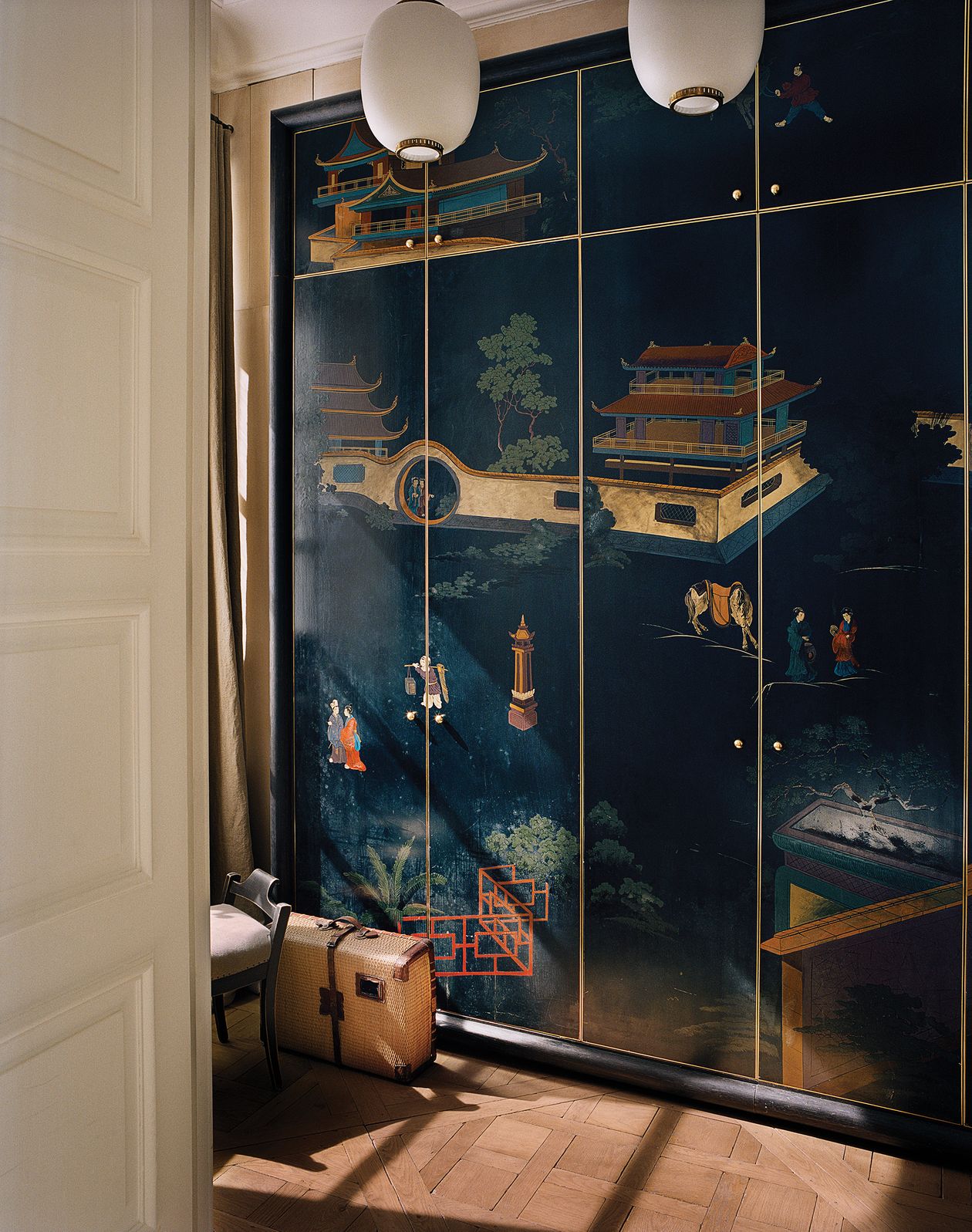
This past March, as Paris prepared to go on lockdown again, Alex got his first AstraZeneca shot. Despite the slow vaccine rollout and surging virus cases in Europe, tentative plans were underway for bringing live audiences back to runway shows.
“Until the last minute everything I’m designing and everything I’m thinking of now has a plan B, with no audience, of course,” he says.
Even when the world finally opens back up, Alex would prefer that fashion didn’t fully return to its pre-pandemic ways. Early last year, just weeks before international borders began closing, Bureau Betak announced a new sustainability pledge, “Ten Commandments” intended to transform the business from the inside, vowing to reuse materials, sort and recycle, reduce nonessential flying and minimize fossil-fuel use.
“I’ve dedicated most of my life to ephemeral events that spend a lot of energy, a lot of carbon and a lot of money for a very short time and for, I hate to say, a useless topic, which is helping luxury brands sell more product,” says Alex. “So, considering all of this, it’s been forever that I’ve wanted to try to use what I can, which is basically the influence we have over our clients and their brands…to create a strong sustainability program within Bureau Betak and use it as a platform.”
And after a year mostly confined to his new Paris apartment, Alex is already thinking about his family’s next permanent home-design project—maybe a country house outside the city or a vacation spot in Patagonia. “I already have a design in mind for Patagonia,” he says.
Reprinted by permission of WSJ. Magazine. Copyright 2021 Dow Jones & Company. Inc. All Rights Reserved Worldwide. Original date of publication: May 29, 2021
 Copyright 2020, Dow Jones & Company, Inc. All Rights Reserved Worldwide. LEARN MORE
Copyright 2020, Dow Jones & Company, Inc. All Rights Reserved Worldwide. LEARN MORE
This stylish family home combines a classic palette and finishes with a flexible floorplan
Just 55 minutes from Sydney, make this your creative getaway located in the majestic Hawkesbury region.
Ahead of the Games, a breakdown of the city’s most desirable places to live
PARIS —Paris has long been a byword for luxurious living. The traditional components of the upscale home, from parquet floors to elaborate moldings, have their origins here. Yet settling down in just the right address in this low-rise, high-density city may be the greatest luxury of all.
Tradition reigns supreme in Paris real estate, where certain conditions seem set in stone—the western half of the city, on either side of the Seine, has long been more expensive than the east. But in the fashion world’s capital, parts of the housing market are also subject to shifting fads. In the trendy, hilly northeast, a roving cool factor can send prices in this year’s hip neighborhood rising, while last year’s might seem like a sudden bargain.
This week, with the opening of the Olympic Games and the eyes of the world turned toward Paris, The Wall Street Journal looks at the most expensive and desirable areas in the City of Light.
The Most Expensive Arrondissement: the 6th
Known for historic architecture, elegant apartment houses and bohemian street cred, the 6th Arrondissement is Paris’s answer to Manhattan’s West Village. Like its New York counterpart, the 6th’s starving-artist days are long behind it. But the charm that first wooed notable residents like Gertrude Stein and Jean-Paul Sartre is still largely intact, attracting high-minded tourists and deep-pocketed homeowners who can afford its once-edgy, now serene atmosphere.
Le Breton George V Notaires, a Paris notary with an international clientele, says the 6th consistently holds the title of most expensive arrondissement among Paris’s 20 administrative districts, and 2023 was no exception. Last year, average home prices reached $1,428 a square foot—almost 30% higher than the Paris average of $1,100 a square foot.
According to Meilleurs Agents, the Paris real estate appraisal company, the 6th is also home to three of the city’s five most expensive streets. Rue de Furstemberg, a secluded loop between Boulevard Saint-Germain and the Seine, comes in on top, with average prices of $2,454 a square foot as of March 2024.
For more than two decades, Kyle Branum, a 51-year-old attorney, and Kimberly Branum, a 60-year-old retired CEO, have been regular visitors to Paris, opting for apartment rentals and ultimately an ownership interest in an apartment in the city’s 7th Arrondissement, a sedate Left Bank district known for its discreet atmosphere and plutocratic residents.
“The 7th was the only place we stayed,” says Kimberly, “but we spent most of our time in the 6th.”
In 2022, inspired by the strength of the dollar, the Branums decided to fulfil a longstanding dream of buying in Paris. Working with Paris Property Group, they opted for a 1,465-square-foot, three-bedroom in a building dating to the 17th century on a side street in the 6th Arrondissement. They paid $2.7 million for the unit and then spent just over $1 million on the renovation, working with Franco-American visual artist Monte Laster, who also does interiors.
The couple, who live in Santa Barbara, Calif., plan to spend about three months a year in Paris, hosting children and grandchildren, and cooking after forays to local food markets. Their new kitchen, which includes a French stove from luxury appliance brand Lacanche, is Kimberly’s favourite room, she says.
Another American, investor Ashley Maddox, 49, is also considering relocating.
In 2012, the longtime Paris resident bought a dingy, overstuffed 1,765-square-foot apartment in the 6th and started from scratch. She paid $2.5 million and undertook a gut renovation and building improvements for about $800,000. A centrepiece of the home now is the one-time salon, which was turned into an open-plan kitchen and dining area where Maddox and her three children tend to hang out, American-style. Just outside her door are some of the city’s best-known bakeries and cheesemongers, and she is a short walk from the Jardin du Luxembourg, the Left Bank’s premier green space.
“A lot of the majesty of the city is accessible from here,” she says. “It’s so central, it’s bananas.” Now that two of her children are going away to school, she has listed the four-bedroom apartment with Varenne for $5 million.
The Most Expensive Neighbourhoods: Notre-Dame and Invalides
Garrow Kedigian is moving up in the world of Parisian real estate by heading south of the Seine.
During the pandemic, the Canada-born, New York-based interior designer reassessed his life, he says, and decided “I’m not going to wait any longer to have a pied-à-terre in Paris.”
He originally selected a 1,130-square-foot one-bedroom in the trendy 9th Arrondissement, an up-and-coming Right Bank district just below Montmartre. But he soon realised it was too small for his extended stays, not to mention hosting guests from out of town.
After paying about $1.6 million in 2022 and then investing about $55,000 in new decor, he put the unit up for sale in early 2024 and went house-shopping a second time. He ended up in the Invalides quarter of the 7th Arrondissement in the shadow of one Paris’s signature monuments, the golden-domed Hôtel des Invalides, which dates to the 17th century and is fronted by a grand esplanade.
His new neighbourhood vies for Paris’s most expensive with the Notre-Dame quarter in the 4th Arrondissement, centred on a few islands in the Seine behind its namesake cathedral. According to Le Breton, home prices in the Notre-Dame neighbourhood were $1,818 a square foot in 2023, followed by $1,568 a square foot in Invalides.
After breaking even on his Right Bank one-bedroom, Kedigian paid $2.4 million for his new 1,450-square-foot two-bedroom in a late 19th-century building. It has southern exposures, rounded living-room windows and “gorgeous floors,” he says. Kedigian, who bought the new flat through Junot Fine Properties/Knight Frank, plans to spend up to $435,000 on a renovation that will involve restoring the original 12-foot ceiling height in many of the rooms, as well as rescuing the ceilings’ elaborate stucco detailing. He expects to finish in 2025.
Over in the Notre-Dame neighbourhood, Belles demeures de France/Christie’s recently sold a 2,370-square-foot, four-bedroom home for close to the asking price of about $8.6 million, or about $3,630 a square foot. Listing agent Marie-Hélène Lundgreen says this places the unit near the very top of Paris luxury real estate, where prime homes typically sell between $2,530 and $4,040 a square foot.
The Most Expensive Suburb: Neuilly-sur-Seine
The Boulevard Périphérique, the 22-mile ring road that surrounds Paris and its 20 arrondissements, was once a line in the sand for Parisians, who regarded the French capital’s numerous suburbs as something to drive through on their way to and from vacation. The past few decades have seen waves of gentrification beyond the city’s borders, upgrading humble or industrial districts to the north and east into prime residential areas. And it has turned Neuilly-sur-Seine, just northwest of the city, into a luxury compound of first resort.
In 2023, Neuilly’s average home price of $1,092 a square foot made the leafy, stately community Paris’s most expensive suburb.
Longtime residents, Alain and Michèle Bigio, decided this year is the right time to list their 7,730-square-foot, four-bedroom townhouse on a gated Neuilly street.
The couple, now in their mid 70s, completed the home in 1990, two years after they purchased a small parcel of garden from the owners next door for an undisclosed amount. Having relocated from a white-marble château outside Paris, the couple echoed their previous home by using white- and cream-coloured stone in the new four-story build. The Bigios, who will relocate just back over the border in the 16th Arrondissement, have listed the property with Emile Garcin Propriétés for $14.7 million.
The couple raised two adult children here and undertook upgrades in their empty-nester years—most recently, an indoor pool in the basement and a new elevator.
The cool, pale interiors give way to dark and sardonic images in the former staff’s quarters in the basement where Alain works on his hobby—surreal and satirical paintings, whose risqué content means that his wife prefers they stay downstairs. “I’m not a painter,” he says. “But I paint.”
The Trendiest Arrondissement: the 9th
French interior designer Julie Hamon is theatre royalty. Her grandfather was playwright Jean Anouilh, a giant of 20th-century French literature, and her sister is actress Gwendoline Hamon. The 52-year-old, who divides her time between Paris and the U.K., still remembers when the city’s 9th Arrondissement, where she and her husband bought their 1,885-square-foot duplex in 2017, was a place to have fun rather than put down roots. Now, the 9th is the place to do both.
The 9th, a largely 19th-century district, is Paris at its most urban. But what it lacks in parks and other green spaces, it makes up with nightlife and a bustling street life. Among Paris’s gentrifying districts, which have been transformed since 2000 from near-slums to the brink of luxury, the 9th has emerged as the clear winner. According to Le Breton, average 2023 home prices here were $1,062 a square foot, while its nearest competitors for the cool crown, the 10th and the 11th, have yet to break $1,011 a square foot.
A co-principal in the Bobo Design Studio, Hamon—whose gut renovation includes a dramatic skylight, a home cinema and air conditioning—still seems surprised at how far her arrondissement has come. “The 9th used to be well known for all the theatres, nightclubs and strip clubs,” she says. “But it was never a place where you wanted to live—now it’s the place to be.”
With their youngest child about to go to college, she and her husband, 52-year-old entrepreneur Guillaume Clignet, decided to list their Paris home for $3.45 million and live in London full-time. Propriétés Parisiennes/Sotheby’s is handling the listing, which has just gone into contract after about six months on the market.
The 9th’s music venues were a draw for 44-year-old American musician and piano dealer, Ronen Segev, who divides his time between Miami and a 1,725-square-foot, two-bedroom in the lower reaches of the arrondissement. Aided by Paris Property Group, Segev purchased the apartment at auction during the pandemic, sight unseen, for $1.69 million. He spent $270,000 on a renovation, knocking down a wall to make a larger salon suitable for home concerts.
During the Olympics, Segev is renting out the space for about $22,850 a week to attendees of the Games. Otherwise, he prefers longer-term sublets to visiting musicians for $32,700 a month.
Most Exclusive Address: Avenue Junot
Hidden in the hilly expanses of the 18th Arrondissement lies a legendary street that, for those in the know, is the city’s most exclusive address. Avenue Junot, a bucolic tree-lined lane, is a fairy-tale version of the city, separate from the gritty bustle that surrounds it.
Homes here rarely come up for sale, and, when they do, they tend to be off-market, or sold before they can be listed. Martine Kuperfis—whose Paris-based Junot Group real-estate company is named for the street—says the most expensive units here are penthouses with views over the whole of the city.
In 2021, her agency sold a 3,230-square-foot triplex apartment, with a 1,400-square-foot terrace, for $8.5 million. At about $2,630 a square foot, that is three times the current average price in the whole of the 18th.
Among its current Junot listings is a 1930s 1,220-square-foot townhouse on the avenue’s cobblestone extension, with an asking price of $2.8 million.
This stylish family home combines a classic palette and finishes with a flexible floorplan
Just 55 minutes from Sydney, make this your creative getaway located in the majestic Hawkesbury region.









